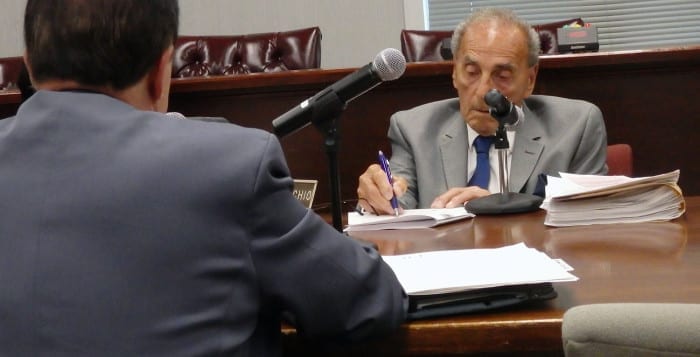Proposed plans to build a 120-foot cellphone tower on Smithtown’s West Main Street may have hit additional interference from Smithtown Town officials.
The town board voted unanimously March 6 to require a full environmental impact study from Deer Park-based Elite Towers on its proposed plans to construct a cellphone tower opposite the Stop & Shop plaza.
Supervisor Ed Wehrheim (R) said the decision to require an environmental study was made based on a March 6 recommendation from Russ Barnett, the town’s director of Environmental and Waterways Division.
Barnett said the cellphone tower plans have raised several environmental concerns due to its proximity to the Nissequogue River, as well as the possibility of it having a negative visual impact on western downtown Smithtown. The developers have also requested a variance to eliminate any required setback from nearby office buildings.
“There are concerns for health and safety of such a tall pole being next to habitable building,” he said, noting if the tower suddenly collapsed it could hit the buildings or people. “We’re afraid it would set a precedence of town code not being applicable in the future.”
In addition, Barnett said he questioned if one of the seven other potential sites for the antenna considered by the utility company or other alternative technologies might result in better cellphone coverage with less of an impact.
“Existing and proposed coverage maps prepared by the application’s [radiofrequency] engineer indicate that the proposed monopole will still leave large areas of [Caleb Smith State] park and its environs without adequate service,” reads the March 6 recommendation letter.
Gregory Alvarez, an attorney representing Elite Towers, said the company was disappointed by the town board’s decision. The developer said it has already addressed the town’s concerns, according to Alvarez, particularly the issue of the tower’s visibility. They previously placed a crane on the proposed property and photographs of how it would look were taken from 25 locations across town.
“This application has been studied rigorously for two and a half years and requiring an [environmental impact study] will kick it out another two years, and adversely affect coverage in the community,” said David Bronston, an attorney representing AT&T at the board meeting.
Barnett said the average time required to complete such a report ranges from 18 to 24 months. Once an initial draft is completed, residents will have at minimum 30-days to review the document and submit comments, according to Barnett. The developer must incorporate this public feedback into a final report, after which Smithtown residents will be given at least another 10 days to comment before the town board makes a decision.
“Bottom line, we’re obligated to protect the health of both residents and our habitat,” Wehrheim said. “If it turns out that there is no impact on our community we’ll make an informed decision at that time.”







